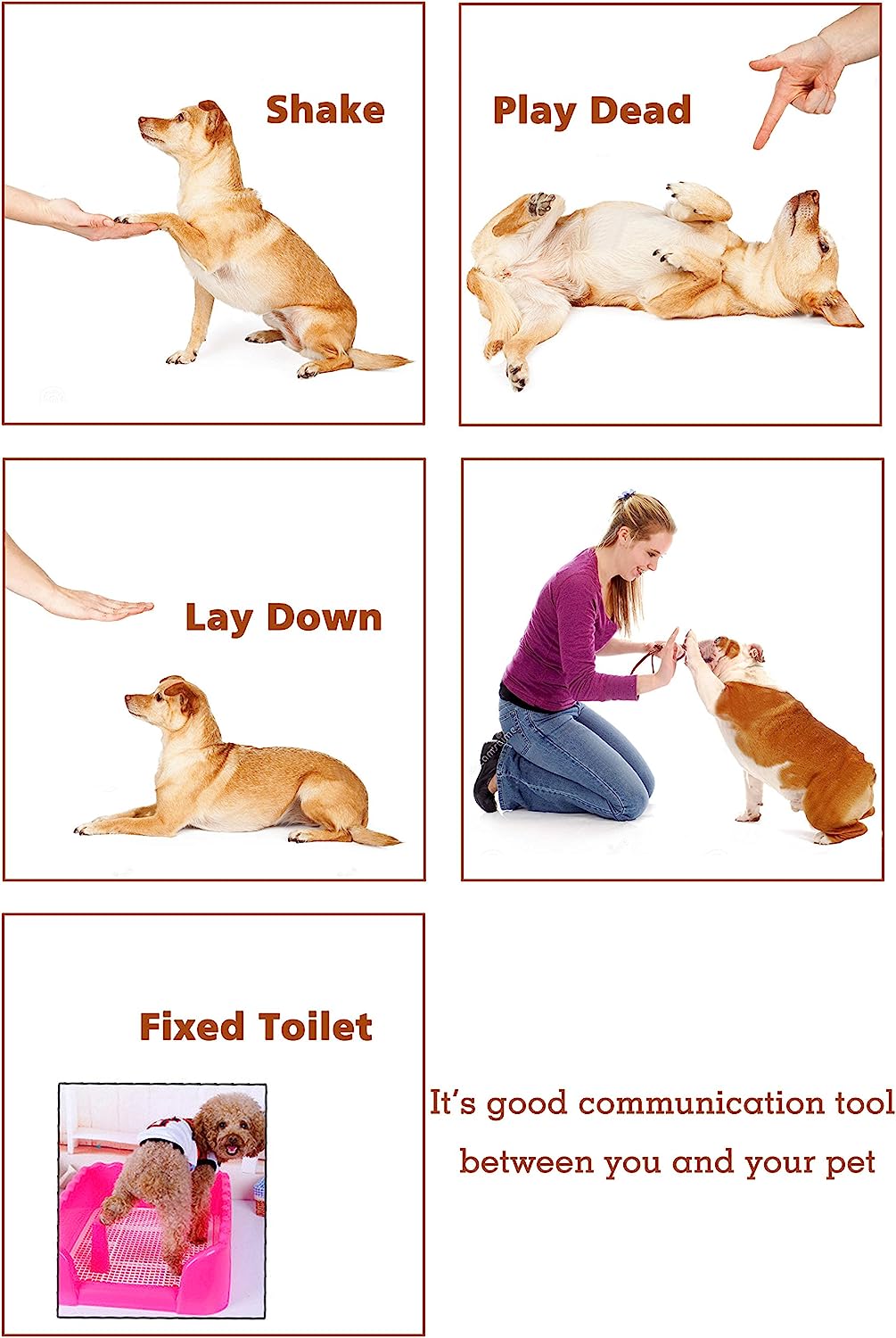
In the world of dog training, Dog Training Clickers are the valuable tools that offer numerous benefits. Dog Training Clickers promote positive reinforcement, clear communication, and a stress-free learning environment for your dog. When used effectively, the Dog Training Clickers can be a powerful aid in teaching your furry companion new behaviors and strengthening the bond between you and your pet. So, if you’re looking for a gentle and efficient way to train your dog, consider giving the clicker a try. Your canine companion may thank you with a wagging tail and well-behaved antics.
Training a dog to walk with a clicker involves using positive reinforcement techniques to encourage desired behavior during walks. Follow this guide with good quality clickers, you will have a good training on your pets.
- Gather Your Supplies:
- Clicker
- Treats
- A leash and collar or harness
- Charge the Clicker:
- Start by “charging” the clicker. Sit in a quiet environment with your dog.
- Click the clicker and immediately give your dog a treat. Repeat this several times to associate the click with a reward. This helps your dog understand that the click means something positive.
- Prepare for a Walk:
- Before going for a walk, make sure your dog is properly leashed and ready.
- Start Walking:
- Begin your walk as you normally would.
- Use the Clicker:
- Pay attention to your dog’s behavior during the walk.
- As soon as your dog exhibits good walking behavior (like walking nicely by your side without pulling), click the clicker to mark the behavior.
- Reward Promptly:
- Immediately follow the click with a treat. The timing is crucial; the reward should be given within a couple of seconds of the click.
- Be Consistent:
- Use the clicker and reward consistently every time your dog walks nicely. This consistency helps your dog understand what behavior is being rewarded.
- Ignore Undesirable Behavior:
- If your dog starts pulling on the leash or misbehaving, avoid using the clicker and treats. This communicates that only good behavior results in rewards.
- Add Verbal Cues:
- Over time, you can introduce verbal cues like “heel” or “walk” alongside the clicker. Use the clicker as a bridge to connect the cue with the desired behavior.
- Practice and Patience:
- Practice this method regularly during walks. It may take some time for your dog to consistently walk nicely on a leash.
- Increase Distractions:
- As your dog becomes proficient at walking with the clicker, gradually introduce more distractions during walks to reinforce good behavior in various situations.
- Stay Positive:
- Maintain a positive and patient attitude. Clicker training is all about encouraging good behavior, so avoid punishing or scolding your dog during the process.
Every dog is different, and the time it takes to see significant improvements may vary. Consistency and patience are key to successfully training your dog to walk with a clicker. With practice, your dog should learn to associate good walking behavior with positive reinforcement and respond well to your cues during walks.

Training doesn’t end once a behavior is learned. It’s an ongoing process to reinforce and maintain good behavior. Be patient and flexible in your approach, and tailor the training to your dog’s individual needs. Clicker training, when done consistently and with positive reinforcement, can be an effective and enjoyable way to teach your dog new skills and behaviors.
The time it takes to train a dog using a clicker can vary significantly depending on several factors, including the dog’s age, breed, temperament, prior training, and the specific behaviors you’re trying to teach.
- Basic Obedience Skills: For teaching basic obedience commands like sit, stay, and come, many dogs can learn within a few weeks to a few months with consistent training sessions. However, ongoing reinforcement and practice are necessary for long-term retention.
- Behavioral Issues: If you’re using a clicker to address specific behavioral issues (e.g., leash pulling, excessive barking), the time required may be longer. It can take several weeks to a few months to see significant improvements, depending on the severity of the problem and the consistency of training.
- Puppy vs. Adult Dog: Puppies tend to learn more quickly, but their attention spans are shorter. Training sessions with a young puppy may need to be shorter and more frequent. Adult dogs may take longer but often have more focus during training.
- Individual Variation: Each dog is unique. Some dogs are quick learners and readily respond to clicker training, while others may take more time due to their personality or previous experiences.
- Consistency and Practice: The key to success with clicker training is consistency and regular practice. Short, frequent training sessions are often more effective than long, sporadic ones.
- Complex Behaviors: Training complex behaviors or tricks may take more time. These often require breaking down the behavior into smaller steps and gradually building up to the final action.
- Professional Guidance: In some cases, it may be beneficial to seek the help of a professional dog trainer, especially if you’re dealing with challenging behaviors.
